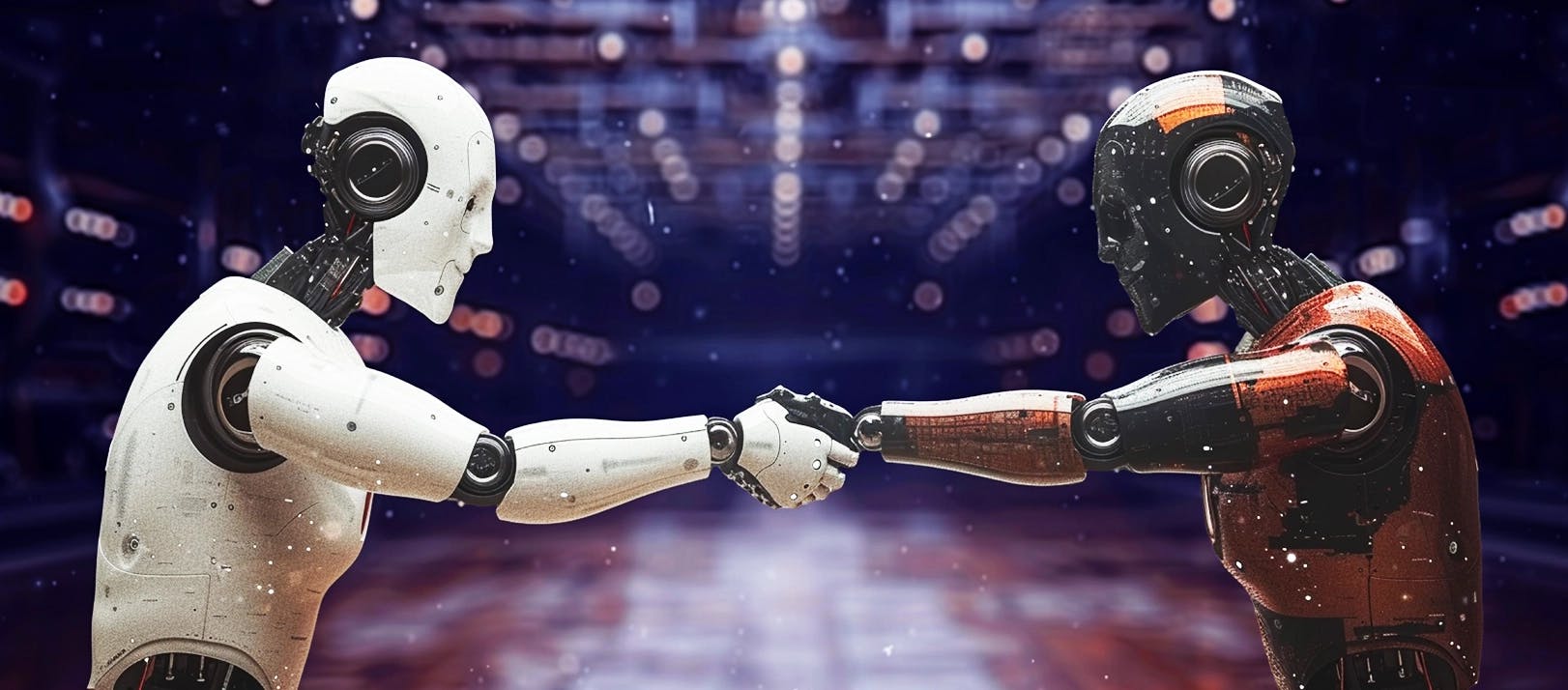
How to Choose the Right AI Partner for Deploying Agentic RAG
Organizations increasingly turn to Retrieval-Augmented Generation (RAG) systems to enhance their knowledge for better business automation management and decision-making capabilities in this constantly changing agentic AI marketplace. Agentic RAG solutions are critical entities that require a meticulous environment, and hence, choosing the right AI agent development partner becomes crucial for successful implementation and achieving long-term value creation for these systems as businesses evolve to utilize a more sophisticated agentic framework.
In this blog, we will discuss a few checkpoints to look out for when deciding to choose the right AI implementation partners for deploying agentic RAG for your organization.
What is Agentic RAG?
Traditional RAG systems are now modernized to combine retrieval mechanisms with generative AI to provide context-aware responses. AI-driven retrieval augmented generation takes this further by incorporating autonomous agents that can decompose queries, retrieve information from multiple sources, and synthesize coherent responses with minimal human intervention.
What Makes Agentic RAG Different?
Unlike traditional RAG, which follows a linear process (query → retrieve → generate), agentic systems employ multiple specialized agents working in concert. For example, a query planning agent might break down complex questions into sub-queries while retrieval agents access different knowledge sources simultaneously. A critic agent might evaluate the quality of retrieved information, and a synthesizer agent combines everything into a coherent response. This multi-agent approach dramatically improves accuracy and contextual understanding compared to more straightforward RAG implementations.
But how do you select the right partner to help navigate this complex terrain? Let's look at the next steps and explore all the key considerations.
1. Assess Expertise in RAG and Agentic Systems
When evaluating potential partners, your first consideration should be their experience with RAG and multi-agent systems. To do this, you need to check the following parameters:
- Look for Demonstrated Success
When building production-grade RAG systems, partners like Codiste have established track records in creating tailored Agentic RAG solutions that effectively combine retrieval mechanisms with generative models. - Multi-agent Orchestration Capabilities
Your partner should demonstrate proficiency with frameworks like LangChain or CrewAI that enable complex agent workflows, including query decomposition, targeted retrieval, and content synthesis.
What Does Effective Orchestration Look Like in Practice?
An adept partner should be able to demonstrate how to manage communication flow between agents, handle conflicts when agents disagree, implement fallback mechanisms when primary retrieval fails, and maintain contextual consistency across multiple agent interactions. As an enterprise, you must ask for specific examples of how they've solved the "agent hallucination problem" – where one agent's error compounds through the system. The best partners have developed guardrails and verification loops to ensure reliability.
Domain-specific knowledge can significantly accelerate your implementation timeline. Partners with experience in your industry (healthcare, legal, finance, etc.) can anticipate challenges and customize solutions accordingly.
2. Evaluate Access to AI/ML Models and Tools
The quality of your Agentic RAG system depends heavily on the foundation models, the tools your partner can provide, and their fine-tuning capabilities.
- Foundation Model Access
Your partner should offer integration with state-of-the-art LLMs such as GPT-4, Gemini, and Llama 3 or cost-effective open-source alternatives like Mistral or BERT, depending on your requirements. - Tool Integration Expertise
Essential for building a robust ecosystem. Look for partners familiar with vector databases (Pinecone, FAISS) and orchestration platforms (Kubernetes, Apache Kafka) that will form the backbone of your deployment. - Fine-tuning Capabilities
Ensure your system can be customized to your specific data and use cases. Without this, you may end up with a generic solution that fails to meet your unique needs.
Why Does Fine-Tuning Matter for Agentic RAG?
While base models offer impressive general capabilities, they lack the specialized knowledge and vocabulary relevant to your business domain.
Effective fine-tuning goes beyond simple training on company documents – it involves techniques like "context distillation", where you teach the model to recognize what information is relevant in your specific context, and "retrieval augmentation during training", where you use your retrieval system during the fine-tuning process, and "behavioural alignment" which ensures the model responds in ways that match your organization's communication style and policies.
Asking potential partners about their approach to these advanced fine-tuning techniques makes life much easier.
3. Prioritize Data Integration and Management
Agentic RAG systems are only as good as the data they can access and process.
- Multi-Source Integration Capabilities
Now, your systems can connect seamlessly with internal documents, real-time data streams, and external databases. Partners should demonstrate experience with platforms like AWS Data Marketplace or Kaggle to enrich their knowledge base. - Data Security Protocols
Look for partners that implement encryption, access controls, and compliance with standards like GDPR. Cloud providers like Azure OpenAI and AWS typically offer comprehensive security solutions.
Preprocessing expertise is often overlooked but critical. What does sophisticated preprocessing involve? Beyond basic cleaning, tokenization, and embedding generation, advanced preprocessing includes:
- Semantic Chunking
Breaking documents into contextually meaningful segments rather than arbitrary character limits. - Cross-reference Mapping
Establishing connections between related information across different documents. - Entity Extraction and Normalization
Identifying and standardizing mentions of key entities (people, products, concepts). - Metadata Enrichment
Adding contextual tags that help with retrieval accuracy. - Version Control and Data Lineage
Tracking document changes and their impact on the knowledge base.
Partners who excel in these areas can dramatically improve your agentic RAG development accuracy and relevance. Ask for concrete examples of how their preprocessing approach has improved retrieval quality in previous implementations.
4. Ensure Scalability and Performance
As your Agentic RAG system becomes business-critical, its ability to scale and perform consistently becomes paramount. Hence, you need to see that your AI development partner’s team possess these qualities.
- Cloud-native Architecture
Partners should be capable of deploying via Kubernetes or serverless platforms that enable auto-scaling as demand fluctuates. - Latency Optimization Strategies
Edge computing can significantly improve user experience. Solutions like HPE's AI servers can reduce response times, making your system more usable in real-world scenarios.
The Performance Challenge of Agentic RAG
Multi-agent systems face unique performance challenges compared to traditional RAG. Each agent introduces potential latency, and the sequential or parallel execution of agents can create complex performance bottlenecks. An expert partner should be able to demonstrate:
- Concurrent Agent Execution
How they parallelize independent agent tasks. - Predictive Pre-retrieval
Techniques for anticipating and pre-loading likely information needs. - Adaptive Retrieval Depth
Dynamically adjusting the amount of information retrieved based on query complexity. - Caching Strategies
Intelligent caching of both retrieved information and agent reasoning steps. - Agent Communication Optimization
Minimizing the token overhead of inter-agent communication.
Ask for benchmark data comparing their multi-agent approach against traditional RAG implementations across different scales of deployment.
Monitoring and observability tools allow you to track performance and identify bottlenecks. Platforms like Coralogix provide real-time insights into how your RAG systems are functioning.
5. Validate Security and Compliance
As AI systems access sensitive information, security becomes non-negotiable. Look for partners that can focus on the three most important aspects of the security of your systems.
- Enterprise-grade Security Measures
Be it encryption, role-based access controls, and detailed audit trails, you need a system that is safe and secure. Cloud providers like Azure and AWS typically lead in this area. - Bias Mitigation Frameworks
To ensure fair and ethical outputs, look for partners that implement tools like Microsoft's Fairlearn to monitor and address potential biases. - Ethical AI Practices
Ethicality reflects a partner's commitment to responsible innovation. Their approach should align with established frameworks for development and deployment while also not breaking AI’s ethical norms.
6. Leverage Co-Innovation and Industry Ecosystems
The rapidly evolving nature of Agentic RAG means that collaboration often yields the best results.
What Makes Co-innovation Successful in Agentic RAG Projects?
The most effective partnerships combine domain expertise with technical innovation in structured ways:
- Joint Development Teams
Look for partners willing to embed their specialists with your domain experts - Agile Innovation Frameworks
Partners should have established methodologies for rapid prototyping and iteration specifically designed for AI projects. - Knowledge Transfer Programs
Effective partners don't just build solutions—they help your team develop the skills to maintain and expand them - Open Architecture Approaches
Solutions should be designed with integration points that allow for future expansion and incorporation of emerging technologies. - Shared Risk Models
Advanced partnerships may include performance-based contracting where payment is partly tied to achieved outcomes.
When evaluating ecosystem partners, ask how they structure co-innovation projects and what metrics they use to track success beyond simple deployment milestones.
7. Assess Total Cost of Ownership (TCO)
Finally, understanding the transparent and complete financial picture is essential for sustaining your Agentic RAG initiative.
- Flexible Pricing Models
Variants like pay-as-you-go or tiered pricing (offered by AWS and Azure) allow you to align costs with actual usage and value creation. - Hidden Costs
Account for expenses related to data preprocessing, model fine-tuning, and ongoing maintenance when evaluating partners. - ROI-focused Partnerships
Link your technological investments to business outcomes. The best partners help you quantify benefits like reduced support costs, faster decision-making, or improved customer satisfaction.
Conclusion
Selecting the right AI partner for enterprise RAG deployment is a strategic decision that impacts your technical implementation and your organization's ability to derive long-term value from AI agent development.
By carefully evaluating potential partners across these seven dimensions—expertise, model access, data management, scalability, security, ecosystem participation, and cost structure—you can identify great partners who can help transform your objectives into powerful tools for insight and action.
Remember that the best partnerships are those that align with your specific business goals and technical requirements. As an entity take the time to assess potential partners against these criteria thoroughly, and you'll be well-positioned to harness the full potential of Agentic RAG in your organization.
To make things further easier for you, Codiste proudly takes pride in practising what they preach, and hence, it can truly prove to be a good bet to take on your AI agent development collaboration and achieve scalable goals with ease. Connect today to know more about them.




